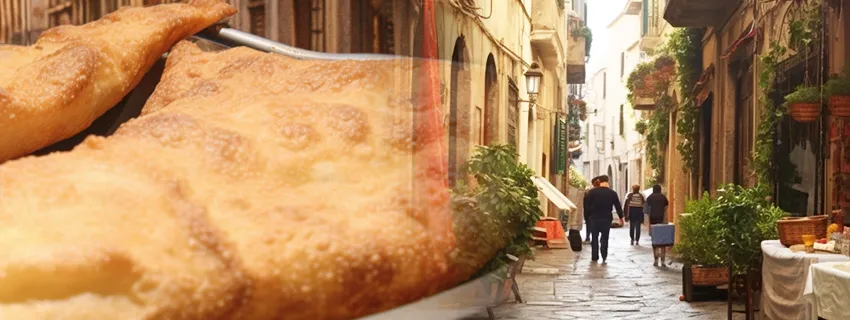Published:
Author: Antonio Maria Guerra
Italian First Courses
The Most Typical Specialties

Welcome! This section of WebFoodCulture is dedicated to the most typical first courses of the Italian gastronomy. We will explain what makes them so special and inimitable, starting with their history and places of origin, all seasoned with a large number of curiosities. Finally, we will discover the most traditional restaurants and producers, thanks to which it will be possible to savor the most authentic taste of these delicacies. Enjoy the reading!
It’s impossible to deny that the very moment one hears of Sicilian cuisine, arancini immediately come to mind: this rice-based specialty, in fact, sums up the taste, aroma and colors of the exuberant culinary tradition of the Italian island. Let’s find out everything there is to know about this unmissable delicacy. (read more)
Origin: Sicily Typology: First Courses / Street Food
Last update
Arancino or arancina? Which is the correct name for the famous Sicilian specialty?
A doubt that, over time, has started heated discussions. Let’s try to shed some light on the matter.
(read more)
Origin: Sicily
Typology: First Courses / Street Food
Although pasta Carbonara cannot boast very ancient origins, it’s considered very traditional. This is because it represents the perfect synthesis of a culinary sensibility matured over the centuries in a precise geographical area. (read more)
Origin: Lazio
Typology: First Courses
Not everyone knows that ‘Margherita,’ the queen of pizzas, probably derives its name from that of a real-life queen: Margherita of Savoy. Let’s find out something more about the most famous Neapolitan specialty in the world, starting from its history.
(read more)
Origin: Naples (Campania)
Typology: First Courses
Even of specialties quite similar to fried pizza can be found in many parts of the world, the one that can be eaten in Naples has unique characteristics, largely related to the particular nature of the city: peculiarities that make it special and inimitable.
(read more)
Origin: Naples (Campania)
Typology: First Courses / Street Food
Il forno comunemente impiegato per cuocere la pizza ricorda molto, nella forma, quella di un iglù. La sua parte interna, la cosiddetta ‘volta’, è interamente rivestita di materiale refrattario, così da non disperdere il calore.
Read more
Lo stesso materiale è utilizzato per la superficie del ‘piano di cottura’. I fumi prodotti dalla combustione del legno sono convogliati all’esterno grazie a un’apposita canna fumaria. La struttura è dotata di una piccola apertura ad arco che può essere chiusa da una porticina metallica quando non è in uso.
Una curiosità: nelle pizzerie tradizionali i forni non vengono quasi mai spenti.
(read more)

Fried pizza is one of the most typical specialties from Naples: it’s possible to say that, in a way, it sums up its spirit. (read more)

Although the ideal place to enjoy an arancino is, without any doubt, Sicily, it’s important to stress the fact that it’s possible to savor this delicacy also in the rest of Italy and in many places around the world. This is due to emigration that, mainly in the past, led many Sicilians to relocate abroad. (read more)
Cous Cous is generally considered the quintessential Arab gastronomic specialty. There is no doubt about its deep connection with the desert and its people: those Berber nomads who in ancient times invented a food that was easy to transport and quick to cook. (read more)
Origin: Maghreb Typology: First Courses
Specialties from the world
It’s quite possible that the origins of the name ‘Couscous’, as well as those of the specialty, are Berber.
Read more
The word could, in fact, derive from the Arabic ‘kuskus’ (‘kuskusu’) or, more likely, from ‘keskes’, a word used still today to indicate the typical ‘layered’ pot commonly known in France as ‘Couscoussierre’.
It’s important to remember that this particular type of food, mainly thanks to its great practicality and versatility, was quickly adopted by many countries, taking in each one different names. Let’s review some of the most similar:
- ‘Couscous’, in France;
- ‘Kouskousaki’, in Greece;
- ‘Couscousu’, in Sicily (Italy);
- ‘Cascà’, in Sardinia (Italy);
- ‘Cuscuz’, in Brazil;
- ‘Wusu-Wusu’, in Togo, Senegal, Nigeria, Ghana and Benin;
Copyright information.
The images displayed in this page belong to WebFoodCulture.










